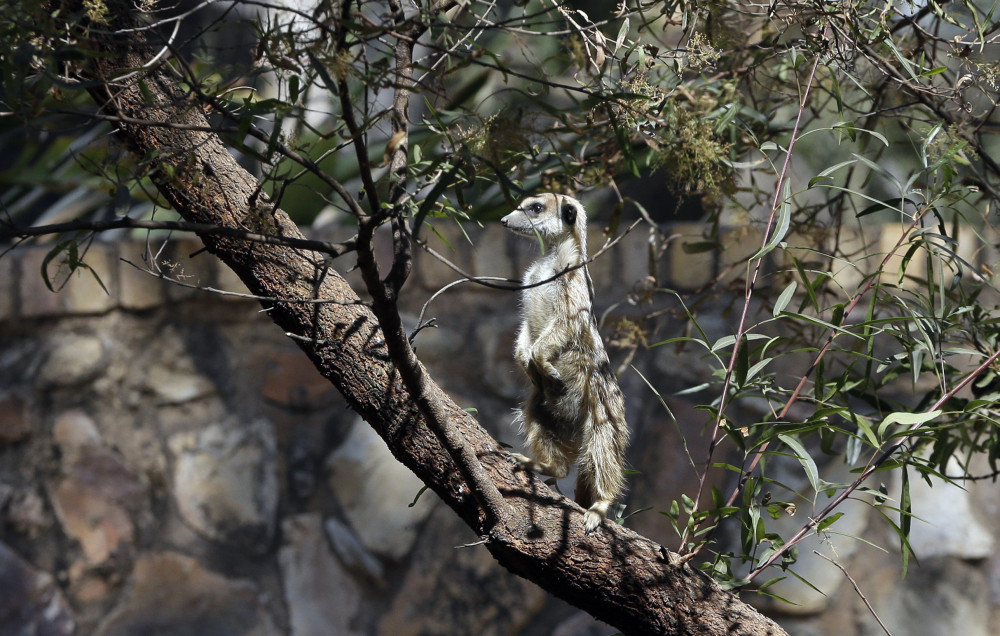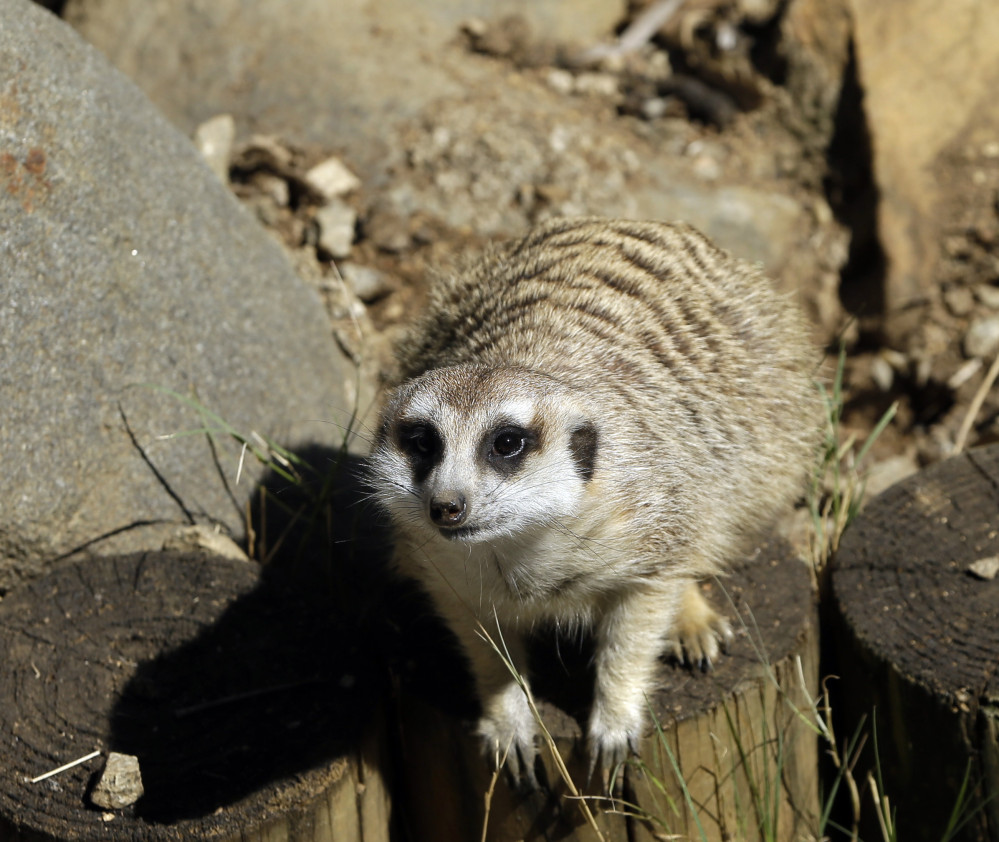JOHANNESBURG — One of the most captivating sights of African wildlife is that of dark-eyed meerkats standing side-by-side on their hind legs, as though posing for a group photograph. They look cuddly and endearing. But a new study says they have a dark side.
The dominant female meerkat in a group banishes the other females when they give birth, killing and even eating their offspring to ensure a plentiful food supply for the alpha couple’s own pups and a labor pool of meerkat babysitters who don’t have their own young to rear.
In the mass media, meerkats have a gentler image, inspiring advertisers, a character in the animated movie “The Lion King” and a TV documentary series that told the story of a meerkat family in southern Africa. That television show, “Meerkat Manor,” explored the meerkats’ often harsh existence but also gave names to the animal “stars,” helping to get viewers emotionally involved.
“Flower” was one of those meerkats. In light of the new study, “Cannibal” could be an apt name for a dominant female meerkat.
The recent study by a group of British and South African universities, as well as the Kalahari Meerkat Project in South Africa, builds on observations that dominant meerkats use violence to regulate breeding in their own group and to survive in desert environments.
“Since meerkats are cute and fluffy, and have been saccharine, anthropomorphized poster children for happy family life, it comes across as more shocking,” the study’s leader, Dr. Matthew Bell of the University of Edinburgh’s School of Biological Sciences, wrote in an email to The Associated Press. Contrary to the public perception, he wrote, meerkat lives are “nasty, brutish and short!”
The study, published in July in Nature Communications, an online journal, analyzed the effect of giving contraceptive jabs to adult female helpers in 12 groups of meerkats in the Kalahari Desert to ensure they could not reproduce for six months. During that period, dominant females were less aggressive toward the subordinates, foraged more, gained more weight and had bigger pups.
The female helpers, in turn, provided more care and food for the dominant female’s offspring, according to the research.
“We’ve done the first clear experiment that measures the value that dominants gain from suppressing their subordinates,” Bell wrote. “Such benefits have always been assumed, but never clearly confirmed.”
Conflict occurs in many species, but meerkat societies in particular provide researchers with good opportunities to measure the costs of that conflict, said Dr. Andrew Young, an evolutionary biologist at Britain’s University of Exeter who was not involved in Bell’s study.
“That’s sort of the niche in which meerkats fit, as a nice model because there’s very strong hierarchy but subordinates do still try to breed,” Young said. In contrast, he said, only dominant female mole rats breed.
The meerkat, a member of the mongoose family, can have several litters a year, said Agnes Maluleke of the Johannesburg zoo.
Send questions/comments to the editors.




Success. Please wait for the page to reload. If the page does not reload within 5 seconds, please refresh the page.
Enter your email and password to access comments.
Hi, to comment on stories you must . This profile is in addition to your subscription and website login.
Already have a commenting profile? .
Invalid username/password.
Please check your email to confirm and complete your registration.
Only subscribers are eligible to post comments. Please subscribe or login first for digital access. Here’s why.
Use the form below to reset your password. When you've submitted your account email, we will send an email with a reset code.